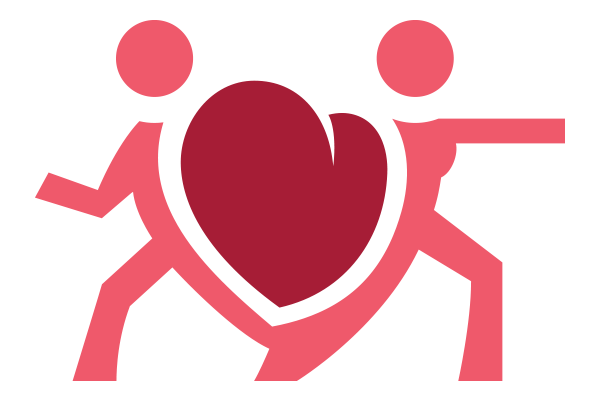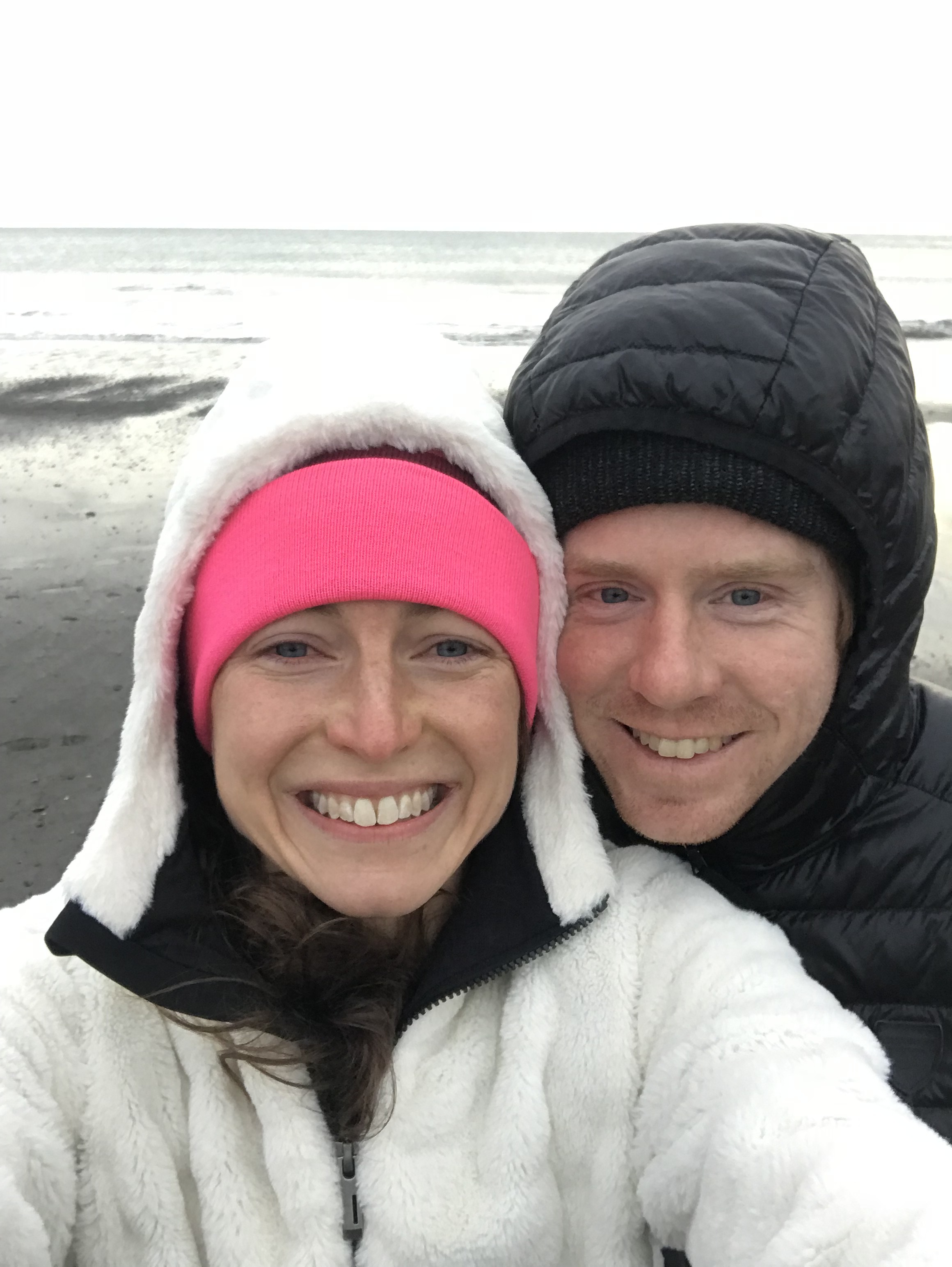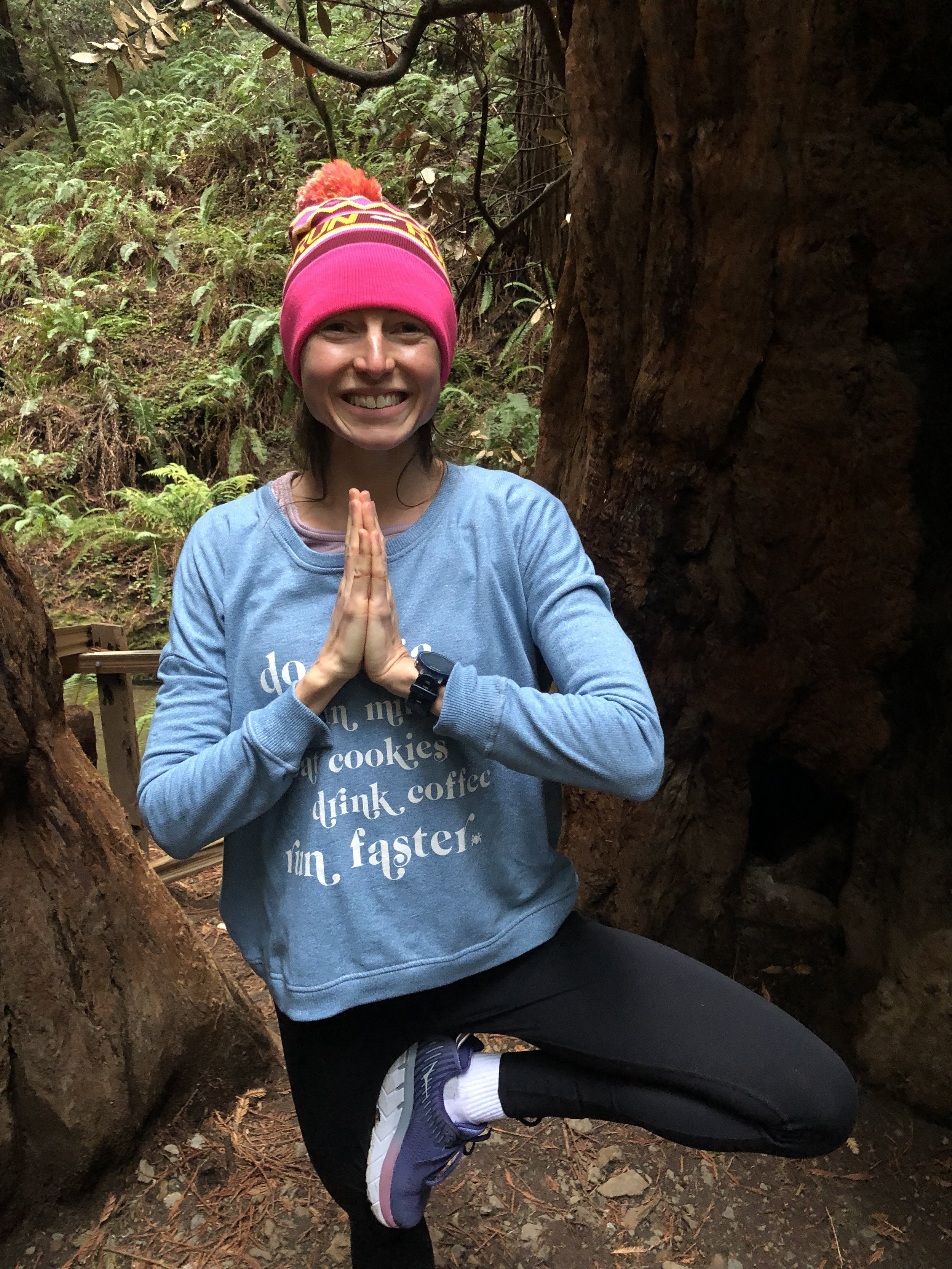6 Ways to Recover Faster from Your Marathon
Keeping myself moving after a marathon does WONDERS for my recovery. The last thing you want to do after running 26.2 miles is to sit in a chair for the rest of the week. That said, you also don’t want to go off on a 5 mile run (or really do any running!) after racing a marathon. Being judicious about how, how much, and when you move after the race can go a long way towards making your post-marathon recovery a smooth, enjoyable part of your training journey.
Every marathon and every marathon recovery is different—just like every body is different!—but here are the 6 post-marathon recovery tactics that have worked very reliably for me!:
1. Walking a good amount the day after the race
I usually walk around 10 miles the day after, just spread out throughout the day. This is a day in particular that I notice if I just keep moving a little bit, I end up feeling a lot better and less stiff later on. Again, I’m not race-walking this or trying to move fast—I just keep moving throughout the day as I feel I should.
Some of the weird kinks I’ve gotten post-‘thon have been from times I’ve been still, when I’ve either sat or slept in a slightly off position just after the race, so this is something of which I try to be very conscious. For example, I try to not cross my legs for an extended period of time while at dinner or traveling, and I attempt to sleep on my back rather than my side—I’ve noticed that lactic acid sometimes tends to pool in weird areas of my body if I sleep on them! I am usually a left side sleeper and I noticed the day after Grandma’s this year that my left upper shoulder was weirdly sore!
Also one note here: go easy on the walking on the actual day of the race. In 2018 at Grandma’s Marathon, according to my Garmin, on race day itself, I achieved my all-time steps-per-day record of 49,928 steps or 35.03 miles, which means I walked around probably about 8 miles after the race. This was not entirely intentional: to get to the area of Duluth with lots of post-race food, we had to walk there from our hotel (we didn’t have a car but roads were blocked off so it would’ve been impossible anyhow). We then just, without setting out to do so, racked up some miles just by exploring the waterfront area around there. This was fun at the time, but it definitely beat me up a little bit more after the fact. In sum, make sure you listen to your body and stay still or (even better) nap as soon as you can post-race, and then when you feel more mobile, get some walking in—and remember that this doesn’t need to be 10 miles either! Just walk whatever is a “good amount” for you!
2. Ice anything that hurts right away!
After winning the 2017 Kiawah Island Marathon in 2:52, I was THE only person brave enough to go in the very very cold unheated outdoor pool in December! It was an awesome ice bath!
I swear that this has saved me from a lingering injury or two. After CIM in 2014, my knee really hurt right after the race but I diligently iced it a couple times in the 24 hours right after the finish, and it was 100% gone 48 hours later. Throw ice on anything that seems more sore than usual. It really will help, and the sooner you ice, the better. This year at Grandma’s, I actually iced my left lower calf as we drove to Minneapolis—which I realized was hurting because of a blister there, not anything serious—but now my left calf feels a lot better than my right. I basically did A/B testing on my calves with ice by mistake: the results are in and ice works!
3. Yoga!!!
Adjust your practice based on how you are feeling and how long it’s been since you’ve raced: I don’t do anything very vinyasa-like until about 5-7 days out, but stick with yin, restorative, and gentle other specific poses as I can tell my body needs them. (And when you are feeling ready to move a little more, come yoga with me online here!)
4. No or very limited running in the two weeks after the race.
I usually take two weeks totally off from running—sometimes I’ll do a brief 10ish min. EASY run just to move a bit in the week after the race, but that’s only if I really really feel like it. (In my first couple runs back, once I do start running, I keep these very short, and think more about time than mileage or pace. I just run whatever my body wants me to run.) More recently I’ve just gone with straight time off from running, and this seems to just make me feel stronger down the road. If the time off starts to make you antsy, then:
a.) See above, yoga!
b.) Use that energy to clean your house, or do other physical tasks for which you didn’t quite have the energy while training for your marathon! My house gets so clean after my marathons! Enjoy getting things organized in a way you normally don’t feel inclined to do! (Look at me! Here I am, writing this blog!)
c.) Take this time to enjoy another physical activity (again, prioritize recovery here!) like light spinning on a bike, or swimming! Ideally whatever you do is non-weight bearing to give the legs a chance to rest. Remember to keep the intensity LOW and to not push past any duration of the activity where your body starts to revolt! 30 minutes is okay! 20 minutes is okay! So is less than 10 minutes! This is your resting time, so take this day by day.
d.) Plan out your next training cycle and get excited about it! Part of a successful season is the planning that goes into it: what are your next goals and races, and how do you set yourself up for success there? If you can’t be out there running yet, what can you plan on doing so that your runs are successful once you return to training?
5. Sleep.
Sleeping is the ultimate recovery tool. Get as much of it as you can!
6. Enjoy things in your life that you didn’t have time for while training for your marathon.
I love how the cycle of marathon training can mimic the cycle of a yoga class: emerge from your recovery as a stronger, reinvigorated you. (By the way, here is this shirt!)
Marathon training can be pretty time-intensive. You will be back running soon enough—give your mind a break by catching up on some reading, gardening (I’m planning on finally planting these beans!), or planning a few fun weekend day trips to local areas that you don’t usually get to enjoy. They key here is to come back refreshed, recharged, and ready to go. Now is not the time to be signing up for a 5k the weekend after your 26.2! (I love racing as much as anyone I’ve met, but I also like to feel good when I race!)
To have a successful training cycle, you have to respect the cycle. A few years ago, I designed a shirt with a “Marathon then Savasana” graphic on it: this idea just honestly holds so true for me—yoga and running are really so interconnected if you compare the yoga class cycle to that of a running season. After a marathon, you really need savasana, first in the sense that you get to literally rest and not move after you cross that finish line. But, second, you also need a larger, metaphorical “savasana” in your life to absorb all the benefits of your training and your race itself: this true break lets you be reborn a stronger runner from the training cycle you just completed.
Congrats to you if you are reading this and just ran a marathon! 26.2 miles is a darn long way to go! Enjoy your savasana time!






